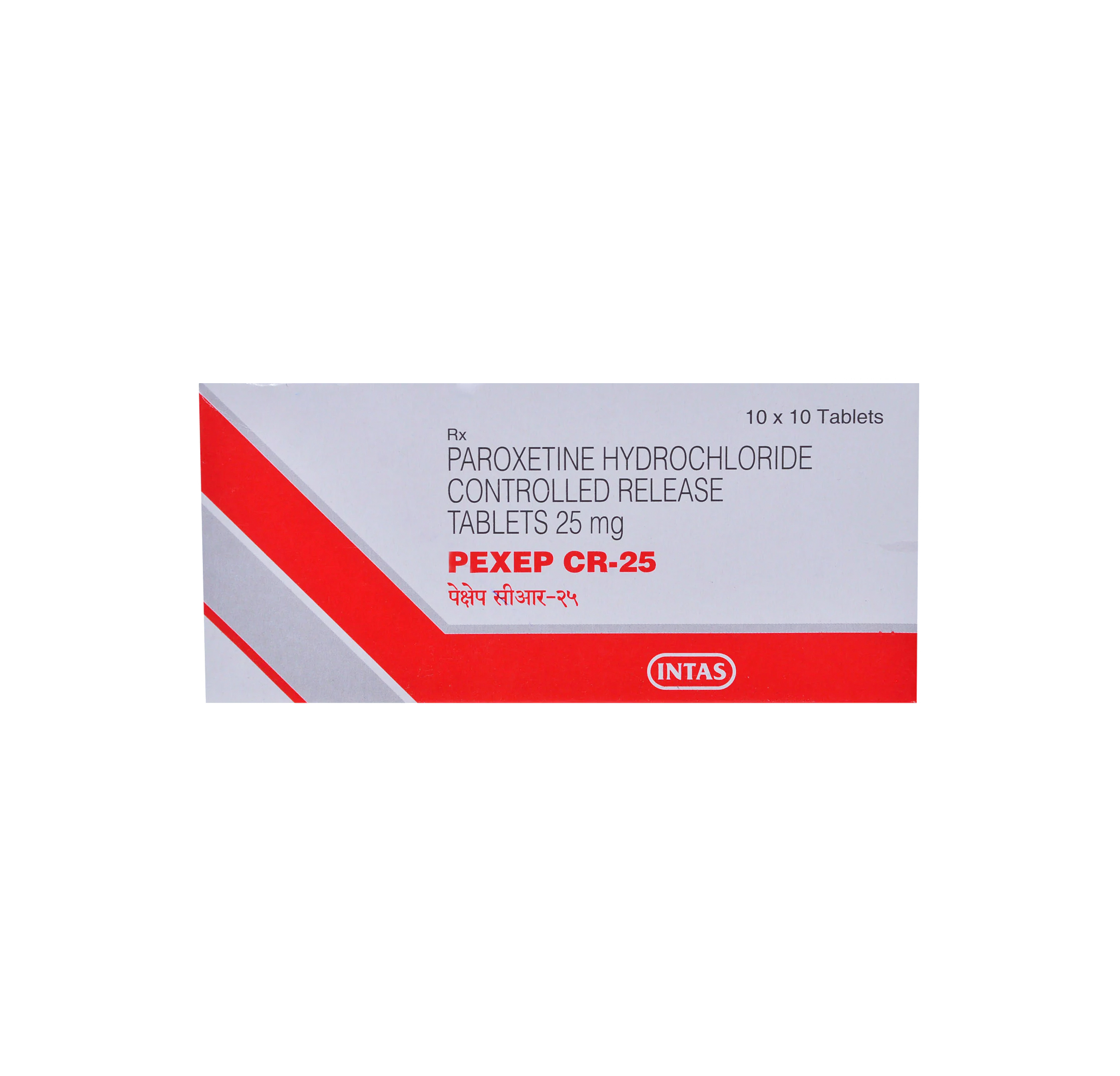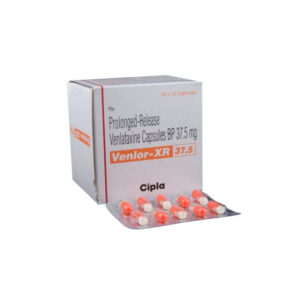Paroxetine is an anti depressant that is used for the treatment of depression and the disorders caused by panic and anxiety. This medicine works by introducing certain natural substances to the brain which helps it to maintain the mental balance at all times. This medicine is easily available in the market in the form of a tablet to be taken by mouth with a glass of plain water on empty stomach or after taking meal. The dosage of this medicine is increased gradually by the doctor depending on the patient’s condition and severity of the depression. Difficulty in concentration, nervousness, nausea, dizziness, drowsiness, confusion, forgetfulness, weakness, nausea, vomiting and diarrhea are some of the common
side effects of this tablet. The advice from a doctor and a prescription may be helpful and making sure that these side effects may not surface at all after the consumption of the tablet. If you have undergone a dental surgery in recent time then take the advice of the doctor before using this medication on regular basis.
What is this drug used for?
• It is used to treat low mood (depression).
• It is used to treat obsessive-compulsive problems.
• It is used to treat panic attacks.
• It is used to treat anxiety.
• It is used to treat post-traumatic stress.
• It is used to treat mood problems caused by monthly periods.
• It is used to treat hot flashes caused by menopause.
• It may be given for other reasons.
Frequently reported side effects of this drug
• Fatigue
• Anxiety
• Headache
• Nausea
• Vomiting
• Constipation
• Abdominal pain
• Passing gas
• Back pain
• Anxiety
• Diarrhea
• Passing gas
• Dry mouth
• Back pain
• Trouble sleeping
• Loss of strength and energy
• Tremors
• Lack of appetite
• Yawning
Other side effects of this drug: Talk with your doctor right away if you have any of these signs of:
• Depression like thoughts of suicide, anxiety, emotional instability, agitation, irritability, panic attacks, mood changes, behavioral changes, or confusion
• Serotonin syndrome like dizziness, severe headache, agitation, sensing things that seem real but are not, fast heartbeat, abnormal heartbeat, flushing, tremors, sweating a lot, change in balance, severe nausea, severe diarrhea
• Low sodium like headache, trouble focusing, trouble with memory, confusion, weakness, seizures, or change in balance
• Bleeding like vomiting blood or vomit that looks like coffee grounds; coughing up blood; blood in the urine; black, red, or tarry stools; bleeding from the gums; abnormal vaginal bleeding; bruises without a reason or that get bigger; or any severe or persistent bleeding
• Seizures
• Restlessness
• Vision changes
• Eye pain
• Severe eye irritation
• Confusion
• Change in balance
• Agitation
• Twitching
• Sweating
• Stiff muscles
• Abnormal heartbeat
• Sensing things that seem real but are not
• Severe dizziness
• Passing out
• Bone pain
• Excessive weight loss
• Burning or numbness feeling
• Sexual dysfunction
• Erection that lasts more than 4 hours
• Signs of a significant reaction like wheezing; chest tightness; fever; itching; bad cough; blue skin color; seizures; or swelling of face, lips, tongue, or throat.
Note: This is not a comprehensive list of all side effects. Talk to your doctor if you have questions.
Pronunciation
(pa ROKS e teen)
Medication Safety Issues
Sound-alike/look-alike issues:
PARoxetine may be confused with DULoxetine, FLUoxetine, PACLitaxel, piroxicam, pyridoxine, vortioxetine
Paxil may be confused with Doxil, PACLitaxel, Plavix, PROzac, Taxol, Trexall
Pexeva may be confused with Lexiva
Geriatric Patients: High-Risk Medication:
Beers Criteria: Paroxetine is identified in the Beers Criteria as a potentially inappropriate medication to be avoided in patients 65 years and older (independent of diagnosis or condition) due to its strong anticholinergic properties and potential for sedation and orthostatic hypotension. In addition, use the SSRIs with caution due to their potential to cause or exacerbate syndrome of inappropriate antidiuretic hormone secretion (SIADH) or hyponatremia; monitor sodium closely with initiation or dosage adjustments in older adults (Beers Criteria [AGS 2019]).
Pharmacy Quality Alliance (PQA): Paroxetine (alone or in combination) is identified as a high-risk medication in patients 65 years and older on the PQA’s, Use of High-Risk Medications in the Elderly (HRM) performance measure, a safety measure used by the Centers for Medicare and Medicaid Services (CMS) for Medicare plans (PQA 2017).
Generic Availability: US
May be product dependent
Storage and Stability
Capsules: Store between 20°C and 25°C (68°F and 77°F); excursions permitted between 15°C and 30°C (59°F and 86°F). Protect from light and humidity.
Tablets: Store between 20°C and 25°C (68°F and 77°F); excursions permitted between 15°C and 30°C (59°F and 86°F).
Suspension: Store at or below 25°C (77°F).
Adverse Reactions
Cardiovascular: Chest pain, hypertension, palpitations, tachycardia, vasodilation
Dermatologic: Diaphoresis, pruritus, skin rash
Endocrine & metabolic: Decreased libido, weight gain
Gastrointestinal: Abdominal pain, constipation, decreased appetite, diarrhea, dysgeusia, dyspepsia, flatulence, increased appetite, nausea, nausea and vomiting, vomiting, xerostomia
Genitourinary: Difficulty in micturition, dysmenorrhea, ejaculatory disorder, female genital tract disease, impotence, male genital disease, orgasm disturbance, urinary frequency, urinary tract infection, urination disorder
Infection: Infection
Nervous system: Abnormal dreams, agitation, amnesia, anxiety, chills, confusion, depersonalization, dizziness, drowsiness, drugged feeling, emotional lability, fatigue, headache, insomnia, lack of concentration, manic reaction, myasthenia, myoclonus, nervousness, paresthesia, vertigo, yawning
Neuromuscular & skeletal: Arthralgia, asthenia, back pain, myalgia, myopathy, tremor
Ophthalmic: Blurred vision, visual disturbance
Otic: Tinnitus
Respiratory: Pharyngeal edema, pharyngitis, respiratory system disorder, rhinitis, sinusitis
Miscellaneous: Trauma
Rare, postmarketing, and/or case reports: Abnormal erythrocytes, abnormal hepatic function tests, acute myocardial infarction, acute pancreatitis, acute renal failure, adrenergic syndrome, aggressive behavior, agranulocytosis, akathisia, akinesia, anaphylaxis, anemia, angina pectoris, angioedema, angle-closure glaucoma, aphasia, aphthous stomatitis, aplastic anemia, asthma, atrial fibrillation, atrioventricular nodal arrhythmia, behavioral problems, bloody diarrhea, bone marrow aplasia, bradycardia, bronchitis, bulimia nervosa, bundle branch block, cardiac failure, cataract, cellulitis, cerebral ischemia, cerebrovascular accident, cholelithiasis, colitis, deafness, dehydration, delirium, depression, diabetes mellitus, disorientation, drug dependence, dyskinesia, dysphagia, dyspnea, dystonia, ecchymoses, eclampsia, edema, erythema multiforme, erythema of skin, esophageal achalasia, exfoliative dermatitis, extrapyramidal reaction, fecal impaction, fungal dermatitis, galactorrhea not associated with childbirth, gastroenteritis, goiter, Guillain-Barre syndrome, hallucination, hematemesis, hematologic disease, hematoma, hemolytic anemia, hemoptysis, hemorrhage (eye, gingival, rectal, retinal, vaginal), hemorrhagic pancreatitis, Henoch-Schonlein purpura, hepatic failure, hepatic necrosis, hepatitis, hepatotoxicity, homicidal ideation, hyperbilirubinemia, hypercholesteremia, hypergammaglobulinemia, hyperglycemia, hyperhidrosis, hyperprolactinemia, hypersensitivity pneumonitis, hypersensitivity reaction, hyperthyroidism, hypertonia, hypoglycemia, hyponatremia, hypotension, hypothyroidism, immune thrombocytopenia, increased blood urea nitrogen, increased creatine phosphokinase in blood specimen, increased lactate dehydrogenase, increased serum alkaline phosphatase, intestinal obstruction, ischemic heart disease, jaundice, ketosis, laryngismus, low cardiac output, lymphadenopathy, malaise, meningitis, migraine, mydriasis, myelitis, neuroleptic malignant syndrome (Stevens 2008), neuropathy, nonimmune anaphylaxis, optic neuritis, orthostatic hypotension, osteoarthritis, osteoporosis, pancreatitis, pancytopenia, peptic ulcer, peritonitis, phlebitis, pneumonia, porphyria, priapism, prolonged bleeding time, pulmonary edema, pulmonary embolism, pulmonary emphysema, pulmonary fibrosis, pulmonary hypertension, quantitative disorders of platelets, restless leg syndrome, restlessness, seizure, sepsis, serotonin syndrome, SIADH, status epilepticus, Stevens-Johnson syndrome, suicidal ideation, suicidal tendencies, syncope, tetany, thrombocytopenia, thrombophlebitis, thrombosis, tongue edema, torsades de pointes, toxic epidermal necrolysis, trismus, uncontrolled diabetes mellitus, urinary incontinence, urinary retention, urticaria, vasculitis, ventricular arrhythmia, ventricular fibrillation, ventricular tachycardia, withdrawal syndrome
–








